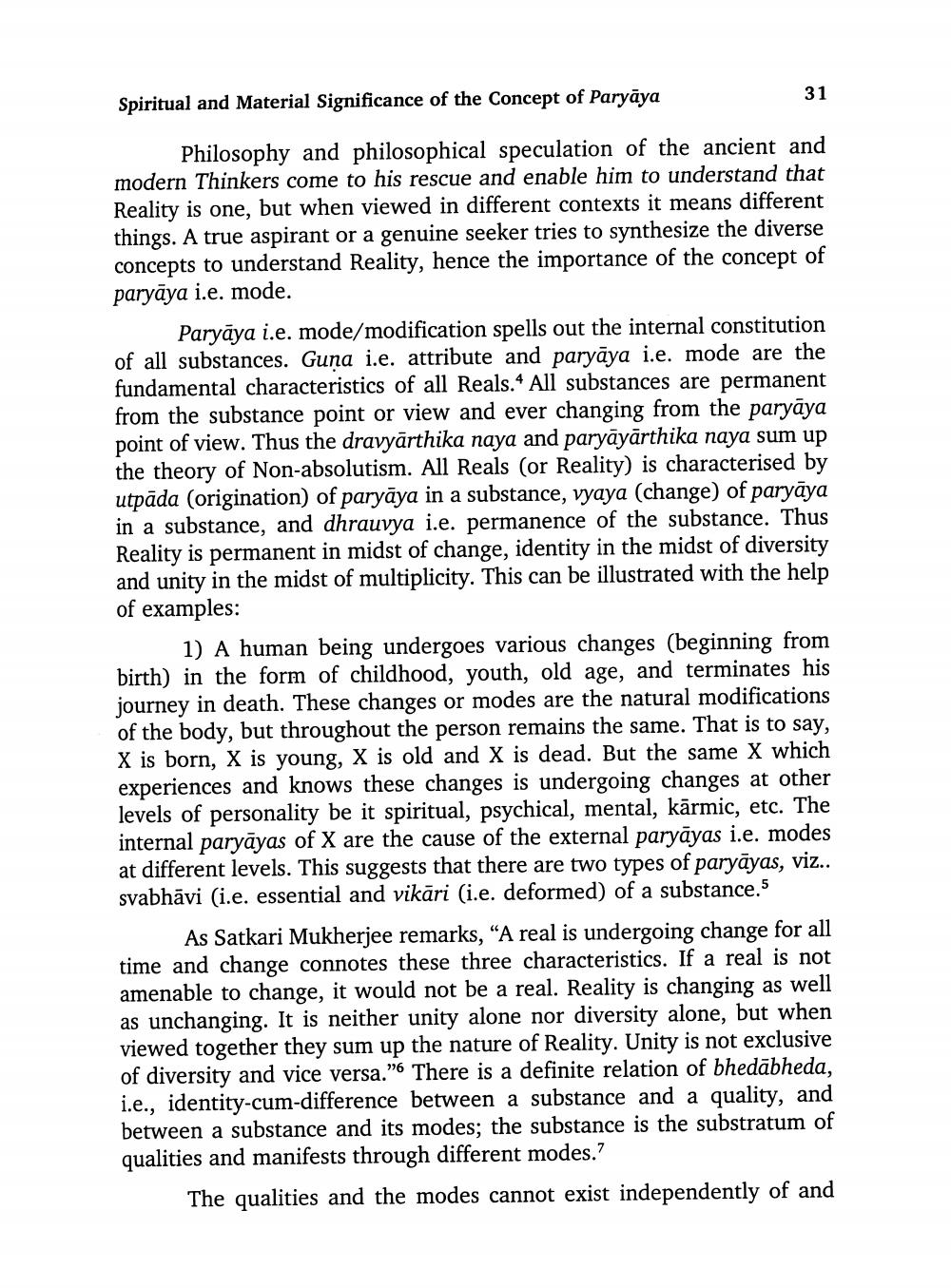________________ Spiritual and Material Significance of the Concept of Paryaya 31 Philosophy and philosophical speculation of the ancient and modern Thinkers come to his rescue and enable him to understand that Reality is one, but when viewed in different contexts it means different things. A true aspirant or a genuine seeker tries to synthesize the diverse concepts to understand Reality, hence the importance of the concept of paryaya i.e. mode. Paryaya i.e. mode/modification spells out the internal constitution of all substances. Guna i.e. attribute and paryaya i.e. mode are the fundamental characteristics of all Reals.4 All substances are permanent from the substance point or view and ever changing from the paryaya point of view. Thus the dravyarthika naya and paryayarthika naya sum up the theory of Non-absolutism. All Reals (or Reality) is characterised by utpada (origination) of paryaya in a substance, vyaya (change) of paryaya in a substance, and dhrauvya i.e. permanence of the substance. Thus Reality is permanent in midst of change, identity in the midst of diversity and unity in the midst of multiplicity. This can be illustrated with the help of examples: 1) A human being undergoes various changes (beginning from birth) in the form of childhood, youth, old age, and terminates his journey in death. These changes or modes are the natural modifications of the body, but throughout the person remains the same. That is to say, X is born, X is young, X is old and X is dead. But the same X which experiences and knows these changes is undergoing changes at other levels of personality be it spiritual, psychical, mental, karmic, etc. The internal paryayas of X are the cause of the external paryayas i.e. modes at different levels. This suggests that there are two types of paryayas, viz.. svabhavi (i.e. essential and vikari (i.e. deformed) of a substance.5 As Satkari Mukherjee remarks, "A real is undergoing change for all time and change connotes these three characteristics. If a real is not amenable to change, it would not be a real. Reality is changing as well as unchanging. It is neither unity alone nor diversity alone, but when viewed together they sum up the nature of Reality. Unity is not exclusive of diversity and vice versa."6 There is a definite relation of bhedabheda, i.e., identity-cum-difference between a substance and a quality, and between a substance and its modes; the substance is the substratum of qualities and manifests through different modes.? The qualities and the modes cannot exist independently of and




